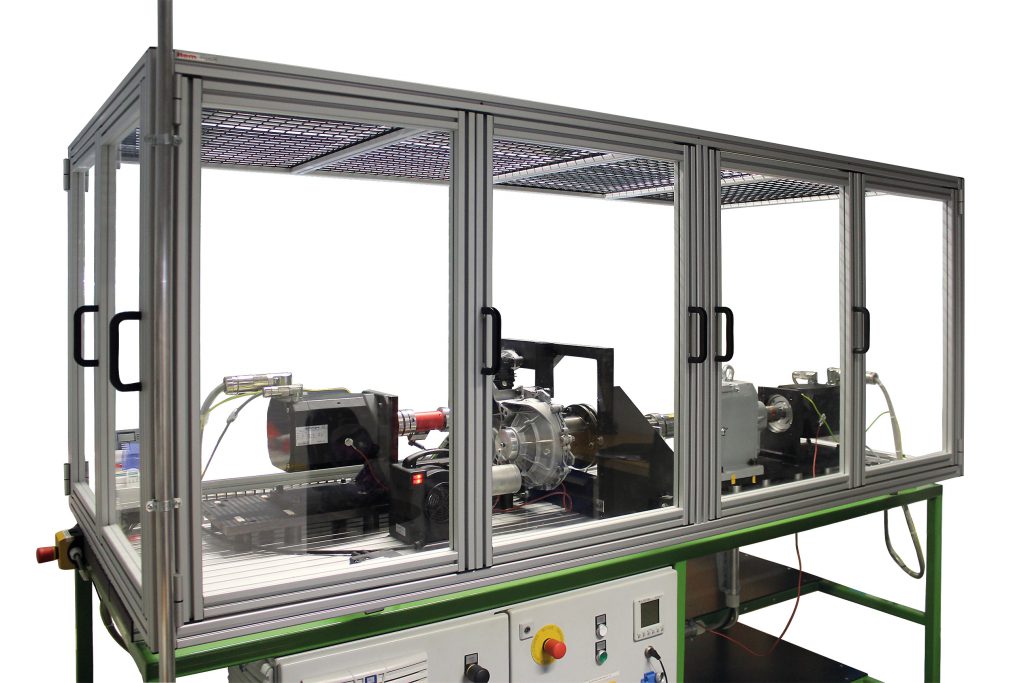
Gearboxes are tested under electrical or hydraulic tensioning. The aim is to characterize the fundamental functionality, impermeability, noise, steady-state temperature and above all the efficiency. Beyond these basics tests, endurance runs are also part of a routine testing program.
With electrical tensioning, the gearbox is resisted by a motor being run as a generator, allowing some of the electrical power to be recovered. This method offers very flexible spatial arrangement options, which is especially helpful for angled gearboxes. The downside is the necessary size of the electrical equipment.
With hydraulic tensioning, two gearboxes are placed back-to-back and connected via their shafts where one gearbox turns around the fast shaft. A hydraulic cylinder is used instead of the torque support. In this setup the electrical machines must only apply the power lost by both gearboxes, which allows the mechanical output to be many times greater.